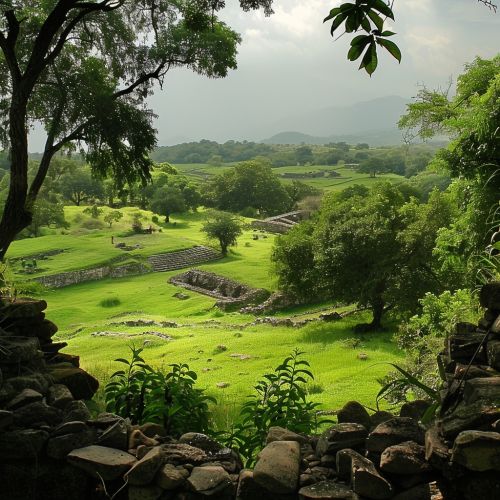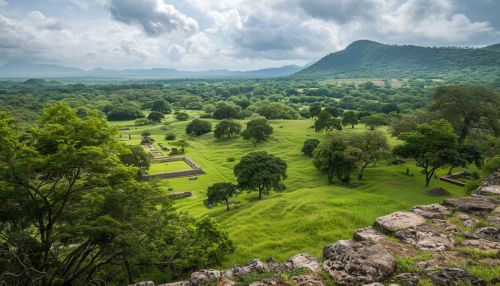Olmec civilization
Origins and Development
The Olmec civilization was the first significant civilization to emerge in Mesoamerica, a region that includes present-day Mexico and Central America. The Olmec civilization, which thrived from approximately 1400 to 400 BCE, is often referred to as the "Mother Culture" of Mesoamerica due to its influence on later civilizations in the region, such as the Maya and the Aztec.
The Olmec civilization originated in the tropical lowlands of south-central Mexico, in the modern-day states of Veracruz and Tabasco. The Olmec heartland, a region of about 150 miles (240 kilometers) in length and 50 miles (80 kilometers) in width, was a fertile alluvial plain crisscrossed by rivers and streams. This environment provided the Olmec with abundant resources, including fertile soil for agriculture, a variety of fauna and flora for hunting and gathering, and materials such as clay, stone, and wood for crafting and construction.


The Olmec civilization developed gradually, with the earliest signs of Olmec culture appearing around 1900 BCE. These early Olmec communities were primarily agricultural, cultivating crops such as maize, beans, squash, and cotton. Over time, these communities grew in size and complexity, eventually developing into the first urban centers in Mesoamerica.
Society and Culture
Olmec society was complex and stratified, with a clear division of labor and a hierarchy of social classes. At the top of this hierarchy were the rulers and elites, who likely held both political and religious authority. These elites lived in the urban centers, which were characterized by large, monumental architecture, such as pyramids, plazas, and mounds. These structures, which were often constructed using basalt and other locally available materials, served as the focal points for political, religious, and social activities.
The Olmec civilization is perhaps best known for its monumental stone sculptures, the most famous of which are the colossal heads. These heads, which can be up to 9 feet (2.7 meters) tall and weigh up to 20 tons, are believed to represent Olmec rulers. The heads are characterized by their distinctive features, including broad noses, thick lips, and helmet-like headdresses. Other notable Olmec artworks include jade figurines, ceramic vessels, and stone stelae.
Olmec religion was polytheistic, with a pantheon of gods that included a rain god, a maize god, and a feathered serpent god. These gods were often depicted in Olmec art and were likely the focus of religious rituals and ceremonies. The Olmec also practiced shamanism and believed in the concept of a spirit world, which is reflected in their art and mythology.
Decline and Legacy
The decline of the Olmec civilization is a subject of ongoing debate among scholars. Some suggest that environmental changes, such as increased volcanic activity or changes in the course of rivers, may have led to the abandonment of Olmec urban centers. Others propose that social unrest or warfare may have contributed to the civilization's decline.
Despite its decline, the Olmec civilization left a lasting legacy in Mesoamerica. The Olmec are credited with the development of many elements that would become characteristic of later Mesoamerican civilizations, including urban planning, monumental architecture, a hieroglyphic writing system, and a calendar system. The Olmec also played a crucial role in the diffusion of maize cultivation and other agricultural practices throughout Mesoamerica.
